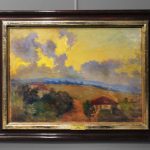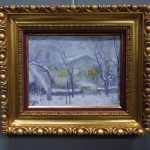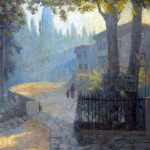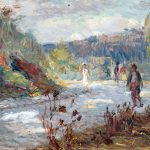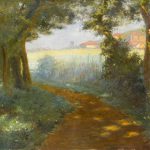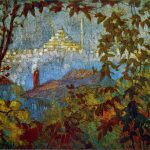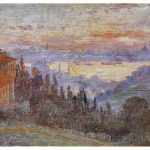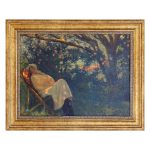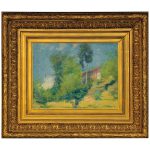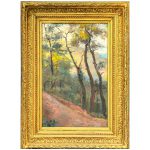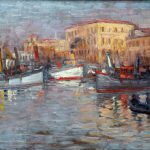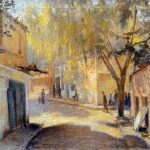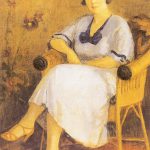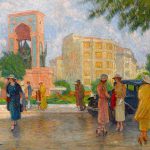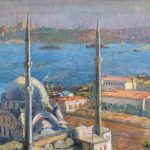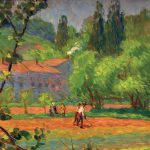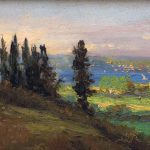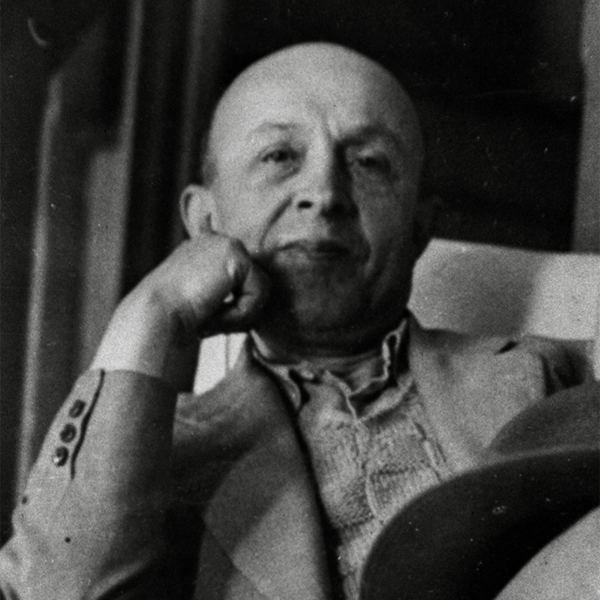
Who is Nazmi Ziya Güran? (1881-1937)
He completed his primary education at a school called Private Şemsülmaarif in Vefa. He studied at Vefa İdadisi (Vefa High School) and then at Mülkiye Mektebi. Nazmi Ziya, who has been fond of art since his childhood, wanted to continue his education at Sanayi-i Nefise Mektebi Ali (Mimar Sinan Fine Arts University). However, his family opposed his wish. He was prevented when it was learned that he was taking lessons from his uncle, Major Hasip, who was an art teacher. He graduated from Civil Service School in 1901. After his father’s death in the same year, when he was able to make his own decisions, he enrolled in Sanayi-i Nefise School in 1902. However, he had serious difficulties in adapting to the education given by teachers such as Salvatore Valeri, Varniya and Osgan Efendi under the direction of Osman Hamdi Bey. The suggestions of Hoca Ali Rıza, from whom he took lessons and who is known for his landscape paintings, to avoid all kinds of influences and focus only on nature can be considered among the reasons for the disharmony in the academy.
There is not enough data to evaluate the influence of French Neo-Impressionist painter Paul Signac, who came to Istanbul while he was a student at the academy and had the opportunity to meet him. No matter what source the effects come from; It is understood that the artist had a serious conflict with the understanding of art he was taught while he was still a student at the academy.
As a matter of fact: He was complained by his teacher Valery on the grounds that he did not comply with the education rules. Osman Hamdi Bey did not like his paintings in the 1907 academic year diploma exam, and his graduation was delayed by one year.
The artist graduated in 1908 and went to Paris with his own means in the same year. After working for a short time in the workshop of Marcel Bachet and Royer at Academie Julian, he continued his education at Ecole National Supérieur. In his free time after working in Cormonn's workshop, he spent his time painting outdoors. Meanwhile, he did not refrain from visiting museums, keeping in mind Hodja Ali Rıza's advice, which he remained faithful to throughout his life, that he should not be influenced by anyone.
He worked for two months at the Louvre Museum, making a copy of Antoine Coypel's Head of Democrite.
The artist, who married her workshop colleague Marcel Chevalier of French origin, in 1911, also visited Germany and Austria during her time abroad. She returned home in 1914. Immediately afterwards, he held positions such as Izmir Teachers' School Director and Istanbul Provincial Education Inspector. Meanwhile, the breath of war is felt throughout Europe. In order to provide for his family during the armistice years, he took initiatives such as establishing a chicken farm in Çamlıca with his friends and working as a shoemaker.
In 1918, he became the director of Sanayi-i Nefise Mektebi. After his directorship, which lasted until 1921, he served as director for two more years in 1925. Founded in 1909, first known as the Ottoman Painters Society, later known as the Fine Arts Union, he participated in their regular exhibitions every year since 1916. In his free time from teaching at the Academy and fulfilling official orders from the state, Nazmi Ziya continued to produce landscape paintings outdoors, alone with nature.
In this period when personal exhibitions were extremely limited, the artist was only able to find this opportunity thanks to the comprehensive exhibition held at the Academy in 1937.
The painting section of the exhibition, which consists of five separate sections on painting, sculpture, decorative arts, posters and Karagöz in history, was reserved only for the artist. He set to work with great excitement, carried his paintings with his own hands on those hot summer days, and worked meticulously on placing and hanging nearly 300 of his paintings. This excitement and fatigue resulted in a major exhibition that opened on August 17, 1937, revealing his 35-year artistic life. However, it also left the artist exhausted. A heart attack occurred on September 11, 1937, before the exhibition closed, causing his death.
